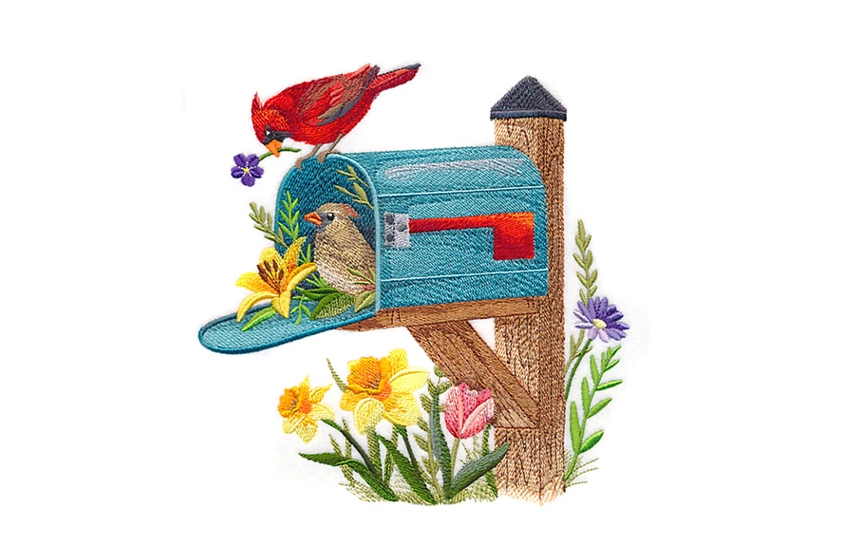Designs Used
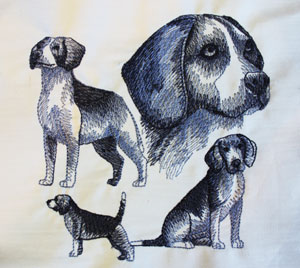
Muslin is a staple in the sewing room - a fabric with a long history, and great versatility. It's light cotton fabric that is loosely woven. Muslin is most often found in solid, neutral colors, although more textured prints are starting to emerge in the marketplace.
Muslin was introduced to Europe from the Middle East in the 17th century. It is often used to make sewing patterns, tote linings, apparel, and as a backing or lining for quilts. More and more it's making its way into embroidery projects, too.
Muslin is a relatively inexpensive fabric, so it is frequently used to make test garments before more expensive fabric is used. This practice is so common that a test garment made with synthetic fabric is also called "a muslin."
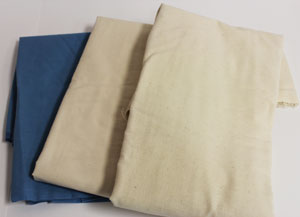
Muslin can often be found in wide widths in the quilting section of fabric stores, because it is used as a backing for quilts. It is often an unbleached or white cloth, but you can also find dyed muslin.
Working with 100% cotton muslin for this article, I had a few different kinds: unbleached muslin, dyed muslin, and Kona premium muslin. Kona premium is a high thread count muslin that is referred to as a "quilter's delight." It is smoother and heavier-weight than the regular cotton muslin.
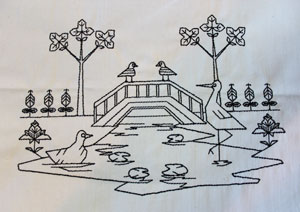
Design Choice
When embroidering on muslin, keep in mind that it's lightweight and fairly transparent. If you're working with large designs, choose those that are simple, open, and light: Redwork, Blackwork, toile, and vintage, are excellent choices.
Using a complex design (a design that has layering or shading) will cause the fabric to pucker, no matter how you stabilize it or hoop it.
The Bird Pond Scene (Blackwork) design (pictured on the left) is open and airy -- perfect for lightweight muslin fabric. So much of muslin is natural, or undyed, so experimenting with color contrast (black on white) brings a striking result.
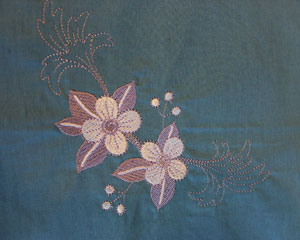
I mentioned earlier that lighter designs (such as Redwork and Blackwork) work well on muslin. If you want to use a design that has filled areas, stick with a smaller size. In the example on the left, the small Out-of-the-Blue Flower Corner looks good on the muslin.
Choosing light and open designs will provide the best results on loosely woven muslin. If you do choose a design with more stitches, quality fabric (such as Kona premium cotton muslin), sturdy stabilizer, and tight hooping are the keys to success.
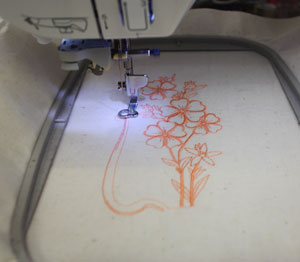
Embroidering on Muslin
As muslin is a loose-weave fabric, using a light- or medium-weight cutaway stabilizer (1.5 - 2.5 ounce) is the best way to ensure crisp-looking results. Hoop the fabric and stabilizer together for crisp, neat, and clean stitches.
Hooping the fabric and stabilizer together will prevent fabric shifting (leading to gaps in a design), and puckering.
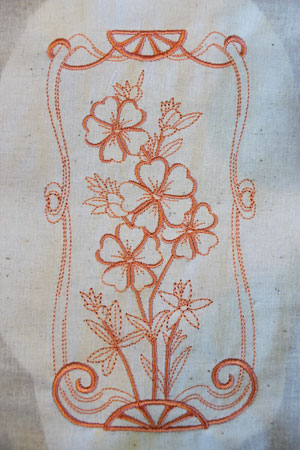
However, some muslin is light enough to be nearly transparent - and in those cases, using a tear-away or water-soluble stabilizer may be desirable. You can use tear-away with muslin if you're working with very, very simple designs.
In the example to the left, I've stitched the Australian Art Nouveau Guinea Flowers (Redwork) design. This design is a bit more complex than other Redwork designs, in that it is a blend of running stitches and satin stitches.
I stitched the design on muslin with cutaway stabilizer (shown left), and then again with tear-away stabilizer. Both stitchouts looked great. Using tear-away I was able to remove more of the stabilizer so that it wasn't visible from the front.
If embroidering on muslin and using a light, simple design, try tear-away or water-soluble; chances are it will work well. But if you see any shifting or gapping in the stitches in the design, that means you'll need to switch to a cutaway stabilizer.
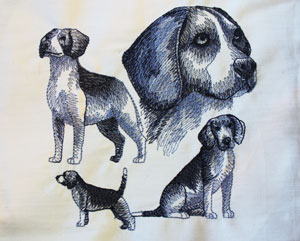
Needle Choice
Either an embroidery needle or a sharp sewing needle will be fine on muslin. Muslin does not have a tight weave, so using an embroidery needle will leave larger holes in the fabric than if using a sharp needle.
Also, if you notice that your stitches are a bit fuzzy and not quite as defined as you'd like, then try a sharp sewing needle instead.
For most projects, my preference is sharp needles, as that keeps the stitches very crisp. For my muslin samples, I used a 75/11 sharp sewing needle.
Kona premium muslin is a high thread count fabric, so it has a tighter weave than other muslin. If working with Kona muslin, you have a little more flexibility in the type of design that you can use.
I tested a Beagle sketch design, which has areas of heavier stitching, and it worked very well. As you can see, it supports the design beautifully!


